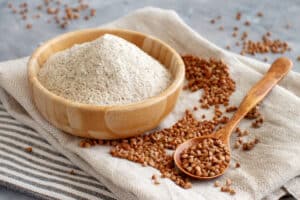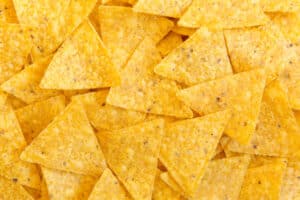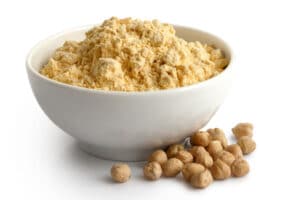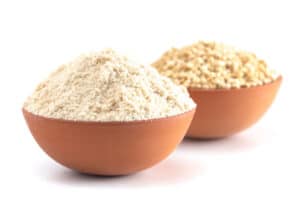Have you ever tried baking with the gluten-free and paleo-friendly tapioca flour? This starch is made from the cassava root, and it’s white, flavorless, and odorless. Moreover, it’s a staple ingredient in thick and creamy sauces, as well as chewy baked goods.
Tapioca is a 100% gluten-free and paleo-friendly flour that adds amazing texture to baked products, sauces, fried dishes, and other delicious recipes.
Since you’re here, reading our article, you probably don’t have any tapioca flour on hand. So, instead of rushing to the shop to get another bag, let’s find you an ideal alternative that you might already have at home.
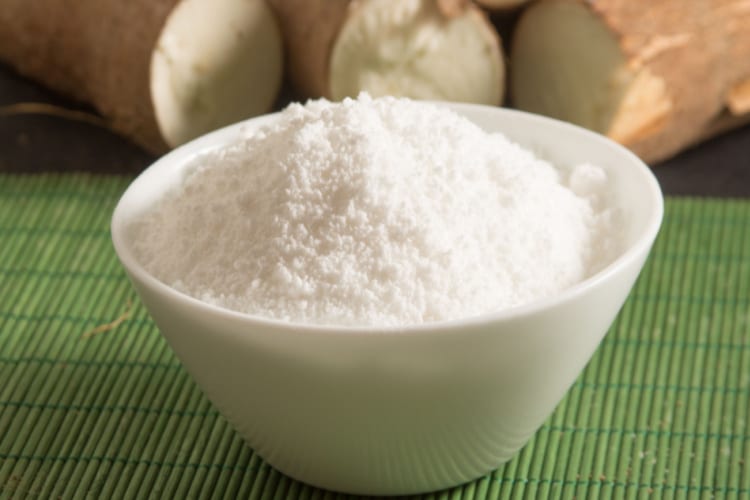
Here are the seven best tapioca flour alternatives: cassava, chickpea, arrowroot, rice, cornstarch flour, and more.
Let’s check them out in more detail.
Tapioca Flour Substitutes: Baking Ratio & Nutritional Value
| One tablespoon of: | Calories | Fat | Carb | Protein | Fiber | Ratio |
| Cassava | 29 | 0.01g | 6.8g | 0.2g | 0.3g | 1:1 |
| Chickpea | 22 | 0.4g | 3.3g | 1.3g | 0.6g | 1:1 |
| Arrowroot | 29 | 0g | 7.1g | 0g | 0.3g | 1:1 |
| Rice | 36 | 0.1g | 7.9g | 0.6g | 0.2g | 2:1 |
| All-purpose | 28 | 0.1g | 6g | 0.8g | 0.2g | 1:1 |
| Cornstarch | 30 | 0g | 7.3g | 0g | 0.1g | 2:1 |
| Potato starch | 43 | 0g | 10g | 0.8g | 0.7g | 1:1 |
What Does Tapioca Flour Taste Like?
Tapioca has no apparent aroma or flavor.
It’s made by soaking a cassava root in water, which is then rinsed to eliminate the starchy fluid. After that, it’s dried until only the starch remains.
Tapioca flour is white and gives baked products a flexible, rubbery, and chewy texture and taste that is difficult to replicate — that is, until we explore our alternatives.
What Is the Nutritional Value of Tapioca Flour?
One tablespoon of tapioca flour consists of:
- 27 calories;
- 0g fat;
- 6.7g carbs;
- 0g protein;
- 0.1g fiber;
Substitutes for Tapioca Flour
Cassava
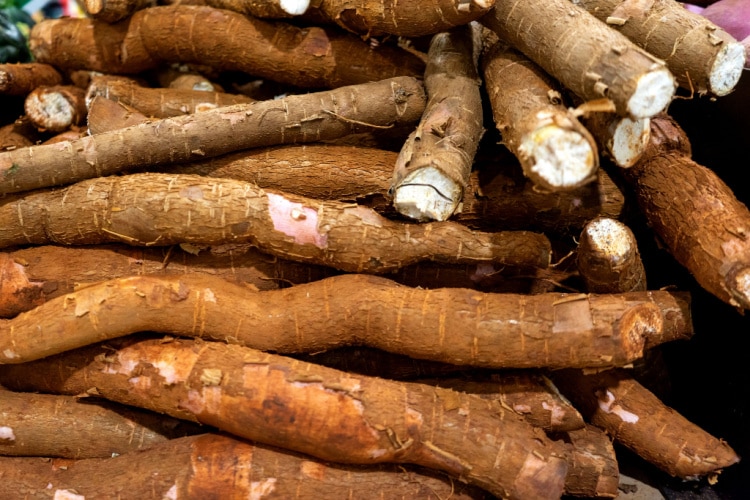
Cassava flour actually derives from the same plant as tapioca — the cassava plant.
The sole distinction is that cassava flour is produced from the complete root, whereas tapioca is produced from the starch portion.
In comparison, cassava flour is richer in nutrients and may have a nuttier flavor depending on the dish you’re cooking.
They can both be substituted equally in most baked dishes since they both have the same amount of starch.
However, cassava flour is richer in fiber, so it’s a stronger thickener. In turn, use a little less of it when thickening sauces and soups than you would with tapioca.
Chickpea
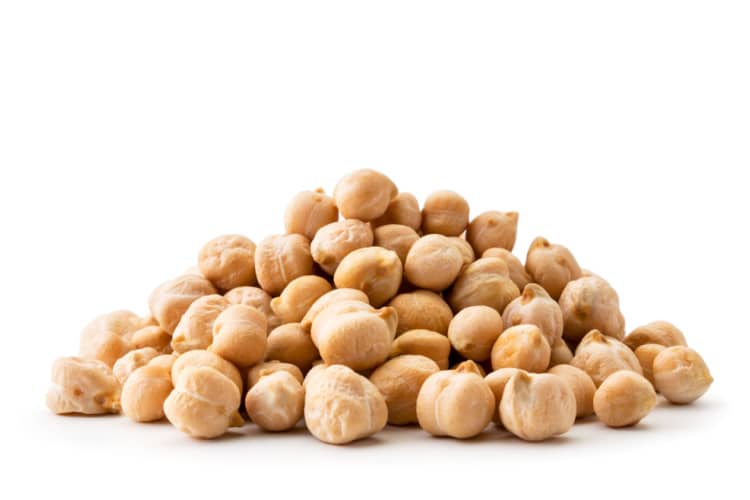
Chickpea flour is a tapioca alternative made from ground gram chickpea. It’s mostly used for thickening soups and stews, as well as baking delectable treats.
The consistency of chickpea and tapioca flour is practically the same, so you won’t need to worry about how the texture will turn out.
The taste of chickpea flour, however, is somewhat earthy and nutty. As a result, chickpea flour may need added sugar if you don’t want to alter the flavor of the desserts you make.
Arrowroot
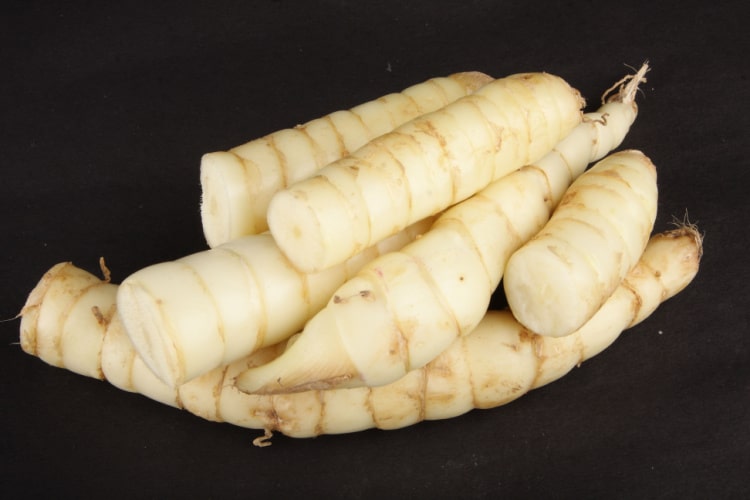
Arrowroot is a great substitute for tapioca flour — it’s gluten-free and it’s labeled as either starch or flour, exactly like tapioca flour.
The texture of arrowroot flour is very similar to tapioca. Plus, it’s flavorless, which we love.
When using arrowroot to thicken a dish, such as tomato soup, for example, you can use it in equal parts to tapioca.
When baking, however, you should combine it with another flour or starch to avoid making too dense a dough. Instead of using one tablespoon of tapioca to one tablespoon of arrowroot, use half arrowroot and half wheat or cassava flour.
Rice
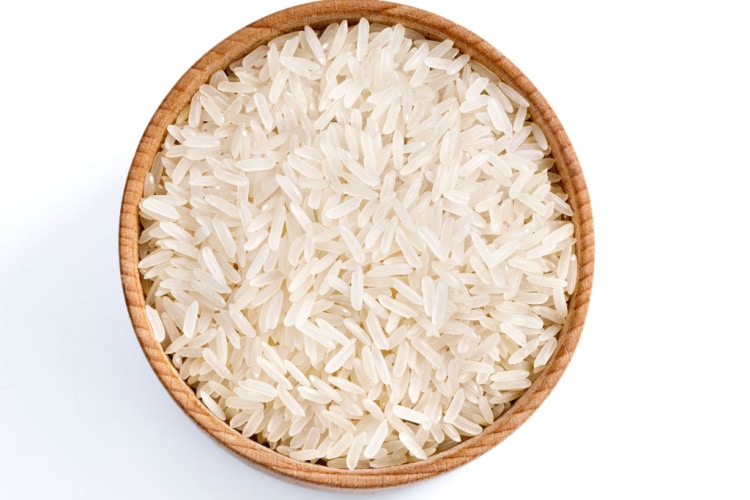
Rice flour derives from finely ground rice and works incredibly well in place of tapioca flour.
Rice flour has a relatively neutral flavor, making it a simple alternative that won’t affect the flavor of your finished product.
There is one minor problem, though — rice flour tends to be a bit sticky. As a result, if you use it in the same ratio to thicken a watery recipe like a soup, stew, or sauce, it will unquestionably thicken your dish way more.
The same goes for baking since using it in equal ratios might give baked goods a harder texture. So, start with half and combine it with another flour.
All-purpose
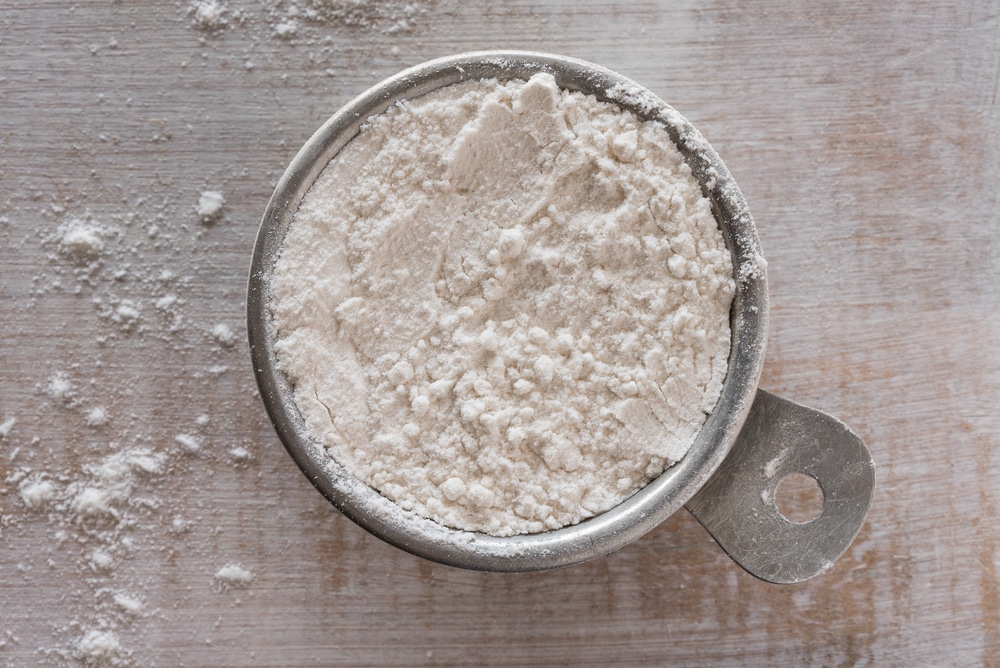
The most accessible tapioca substitute out there — if you don’t mind a little gluten, of course — is all-purpose flour.
There are several things to bear in mind with this alternative, though. For example, baked delicacies might not be as chewy as those produced with tapioca.
If a recipe calls for a less chewy texture, then you can substitute them equally. However, if a recipe aims for chewiness and fluffiness, then you must blend all-purpose flour with another flour, such as cassava.
Sauces and soups produced with wheat flour will have a more matte finish than those made with tapioca. Plus, it takes longer to cook and thicken. Consequently, it’s best to use it in a 1:½ ratio.
Cornstarch
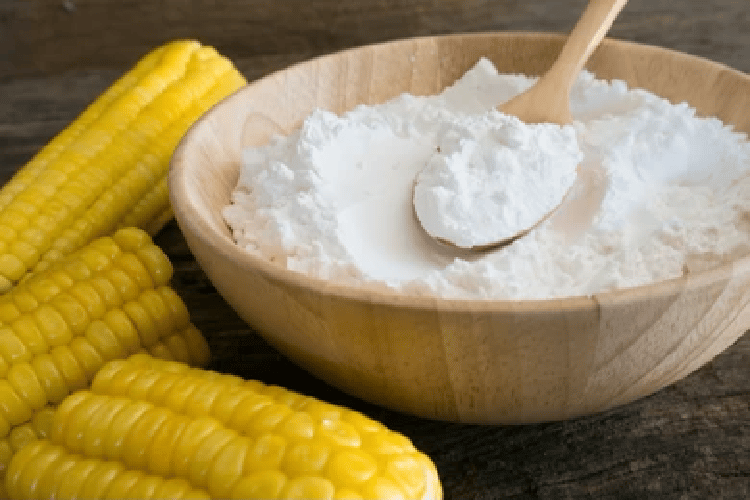
Cornstarch is a gluten-free alternative made from finely crushed corn. It thickens in the same manner as tapioca flour does, but with a less glossy sheen.
Consequently, cornstarch will lose its thickening capacity if cooked for too long. If you go for this substitute, make sure that you add it a bit later than tapioca.
If you use cornstarch in baking recipes in the same proportions as tapioca, you may wind up with a crumbly cake, cookie, or muffin. As a result, it’s best to use half of it, and depending on the recipe, you might as well combine it with other flours, like cassava.
Potato starch
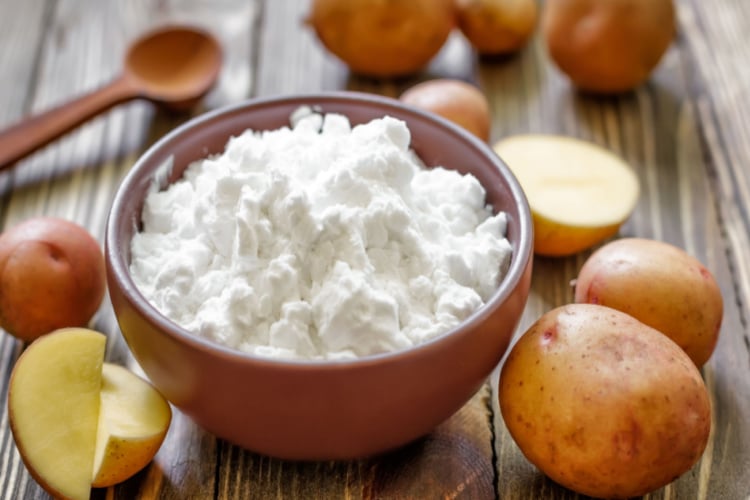
Potato starch is made by smashing potatoes to extract their starch and then dehydrating them into flour.
Potato starch has a neutral flavor, so it will not overpower your dishes. That said, it does have a thicker consistency than tapioca flour, so you need to watch the ratio.
Potato starch may readily substitute tapioca flour in sauces and gravies, thickening them in a 1:1 ratio.
If you use a 1:1 ratio in baked recipes, however, the result will be considerably denser — go with a ratio of 1:0.25 or 1:0.5 tbsp of potato starch, followed by additional flour.
Popular Recipes That Call for Tapioca Flour
Tapioca flour may be used for a plethora of recipes. Below, we’ll share our favorite ones. In some, tapioca starch is the main star of the recipe, and in others, it serves as a sidekick to bind all the ingredients together.
So, if you’ve ever wondered what to make with this flour, our recipes should be a good source of inspiration!
Pao de Queijo
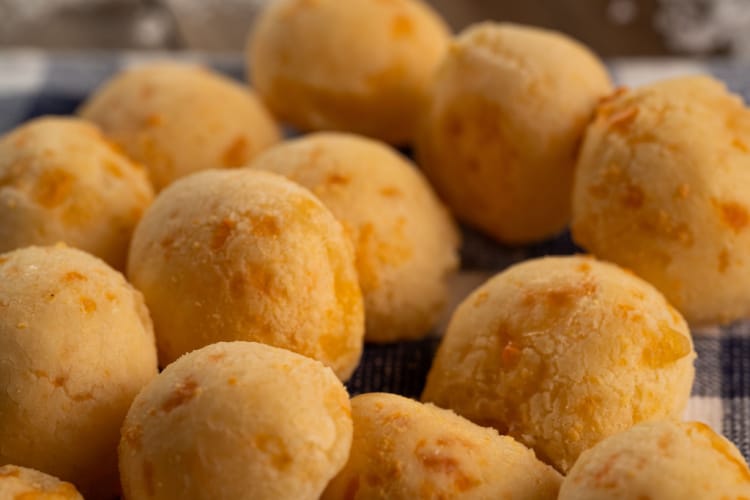
Pao de Queijo, which translates to “cheese bread” in Portuguese, refers to the well-known Brazilian cheese rolls that are frequently eaten for breakfast or as a snack in the afternoon.
Because of the tapioca flour, they have soft, chewy outsides. Additionally, since this recipe doesn’t call for yeast, you won’t need to spend any time kneading, rolling, or resting the dough when creating these cheese rolls. To get the whole chewy and cheesy sensation, don’t overbake them and serve them warm.
Pan de Yuca
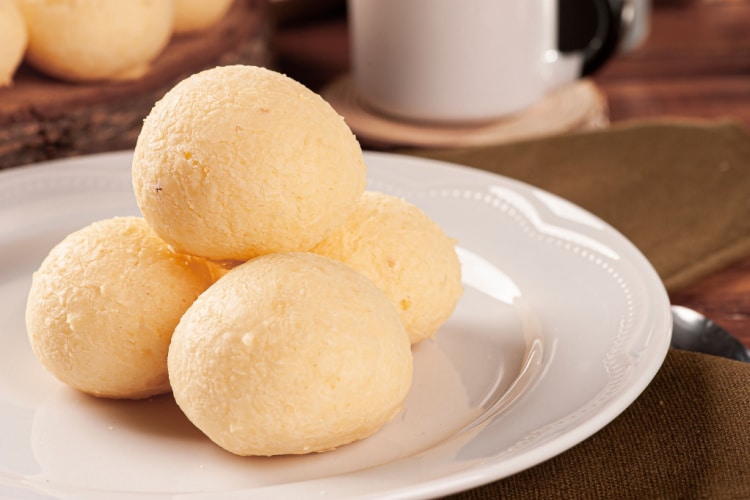
Similar to Pao de Queijo from Brazil, Pan de Yuca is a Columbian specialty. It’s a kind of cheese bread that people enjoy having in the morning.
The Pan de Yuca contains only six ingredients: tapioca flour, cheese, milk or water, butter, eggs, and baking powder. The ingredients are nearly identical to those in Pao de Queijo, with only one minor change — the cheese.
Queso Fresco is a soft and fresh Mexican cheese that is traditionally used in Pan de Yuca, whereas Pao de Queijo uses either mozzarella or cheddar cheese. Serve them hot with some yogurt, tea, or coffee.
New York Pizza Crust
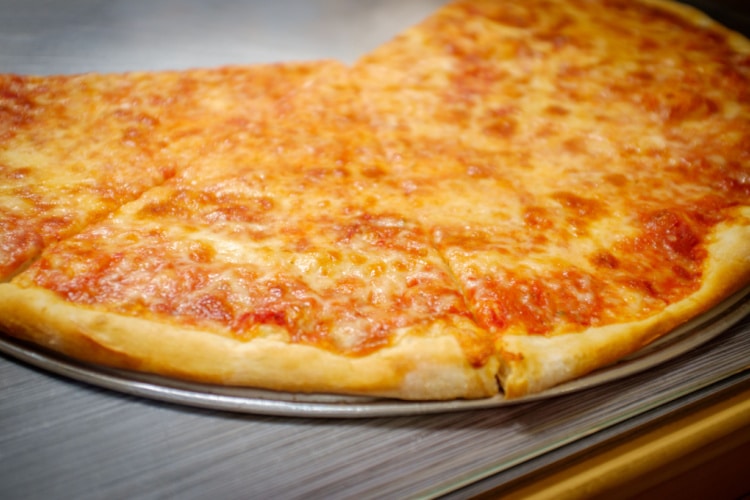
Have you ever had New York-style pizza? We think that it has a crust that’s unmatched by any other — it curves and folds like rubber!
So, what’s the secret ingredient that makes this kind of chewiness possible? Well, tapioca flour, of course! Additionally, the pizza is 100% gluten-free. In just a few minutes, you can have a pizza that tastes like it was made in a local New York pizzeria — plus, you get to choose your preferred toppings!
Berry Cobbler
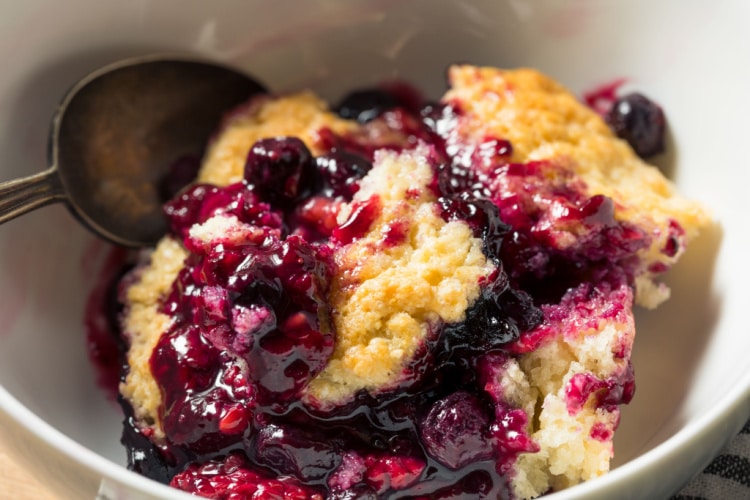
Cobbler is the perfect fruity dessert that takes less than an hour to make. It’s a fruit dessert with a top crust, fruity filling, and no bottom crust. Blackberries and blueberries are combined for the filling, followed by cinnamon for a hint of spice.
You can serve it after a nice Sunday dinner. It’s classic comfort food and is super versatile as well! You don’t have to go for blackberries and blueberries per se, you can add apples, peaches, plums, and the list goes on and on!
Conclusion
Since there are so many options to choose from on our list, we assume that you already have at least one sort of substitute you can use in place of tapioca flour.
The majority of the alternatives function quite similarly to tapioca and have a bland taste that won’t alter the flavor of a meal. Some are slightly different, such as all-purpose flour, which you should also consider if you are not gluten-sensitive.
Before you go, remember to use the alternatives in their proper ratios!



